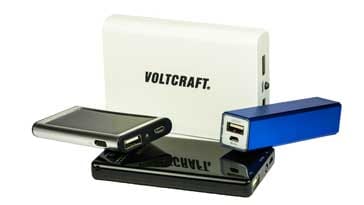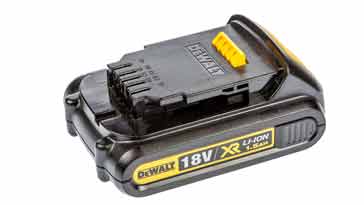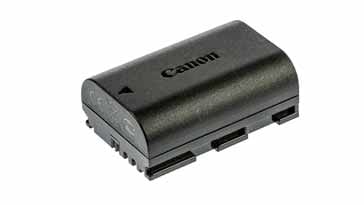Lithium Ion Battery Advantages & Disadvantages
When looking at the possible usage of Lithium Ion, Li-Ion technology it is necessary to be aware of its advantages and disadvantages to make the most of its use.
Lithium Ion Battery Includes:
Li-ion technology
Types of lithium ion battery
Lithium polymer battery
Li-ion charging
Li-ion advantages & disadvantages
How to preserve lifetime of lithium ion batteries
Battery Technology Includes:
Battery technology overview
Battery definitions & terms
Zinc carbon
Alkaline
Zinc air cells
NiCad
NiMH
Li-ion
Lead acid
The use of lithium ion, li-ion batteries has grown significantly in recent years. They offer some distinct advantages and improvements over other forms of battery technology including nickel metal hydride, lead acid batteries and of course nickel cadmium batteries.
However, like all technologies, lithium ion batteries have their advantages and disadvantages.
To gain the best from the li-ion battery technology, it is necessary to understand not only the advantages, but also the limitations or disadvantages of the technology. In this way they can be used in a manner that plays to their strengths in the best way.

With lithium ion battery technology advancing at a very swift rate, the disadvantages are being addressed and the overall technology is being improved.
Because of their attributes, lithium ion batteries and cells are more suitable for some applications than others. They provide high levels of charge than other battery technologies, and they have a higher voltage, and can often cost more than some of other types. This makes them more applicable to some electronic circuit designs than other types of battery technology, or in other cases it may make them less suiable.
Also modern lithium ion batteries are paired with battery management systems or circuitry. This helps ensure that the battery is run within its capability and provides the best performance.
Lithium ion battery advantages
There are many advantages to using a li-ion cell of battery. As a result the technology is being used increasingly for a huge number of widely varying applications. Everything from small electronic devices, through smartphones and laptops to vehicles and many other applications.
When selecting a lithium ion battery over another technology such as a lead acid battery or a nickel metal hydride battery (NiMH battery), it is necessary to look at the advantages.
The advantages of Li-ion technology mean that these batteries are finding an increasing number of applications, and as a result a huge amount of development is being invested into them.
The li-ion battery advantages include:
High energy density: The high energy density is one of the chief advantages of lithium ion battery technology. With electronic equipment such as mobile phones needing to operate longer between charges while still consuming more power, there is always a need to batteries with a much higher energy density.
For example, NiMH batteries would not be able to provide the charge capacity required for a modern smartphone. Using Nickel Metal Hydride battery technology a smartphone would not last long enough, especially if the battery needed to keep within the same size constraints.
In addition to this, there are many power applications from power tools to electric vehicles. The much higher power density offered by lithium ion batteries is a distinct advantage. Electric vehicles also need a battery technology that has a high energy density.
- Self-discharge: One issue with many rechargeable batteries is the self discharge rate. Lithium ion cells is that their rate of self-discharge is much lower than that of other rechargeable cells such as Ni-Cad and NiMH forms. It is typically around 5% in the first 4 hours after being charged but then falls to a figure of around 1 or 2% per month.
Low maintenance: One major lithium ion battery advantage is that they do not require and maintenance to ensure their performance.
Ni-Cad cells required a periodic discharge to ensure that they did not exhibit the memory effect. As this does not affect lithium ion batteries and cells. This process or other similar maintenance procedures are not required.
Likewise lead acid cells require maintenance, some needing the battery acid to be topped up periodically.
Fortunately one of the advantages of lithium ion batteries is that there is no active maintenance required.
- Cell voltage: The voltage produced by each lithium ion cell is about 3.6 volts. This has many advantages. Being higher than that of the standard nickel cadmium, nickel metal hydride and even standard alkaline cells at around 1.5 volts and lead acid at around 2 volts per cell, the voltage of each lithium ion cell is higher, requiring less cells in many battery applications. For smartphones a single cell is all that is needed and this simplifies the power management.
- Load characteristics: The load characteristics of a lithium ion cell or battery are reasonably good. They provide a reasonably constant 3.6 volts per cell before falling off as the last charge is used.
- No requirement for priming: Some rechargeable cells need to be primed when they receive their first charge. One advantage of lithium ion batteries is that there is no requirement for this they are supplied operational and ready to go.
- Variety of types available: There are several types of lithium ion cell available. This advantage of lithium ion batteries can mean that the right technology can be used for the particular application needed. Some forms of lithium ion battery provide a high current density and are ideal for consumer mobile electronic equipment. Others are able to provide much higher current levels and are ideal for power tools and electric vehicles.
For some applications there may be other advantages of using lithium ion batteries and cells. With a cell voltage of just over 3 volts, a single cell may be sufficient for many applications. Most mobile phones use a single cell.
Other applications may have their own parameters that may mean a lithium ion battery or cell is use for use within the electronic circuit design, or for an electrical application.
The advantages of lithium ion cells and batteries mean that they are beng used increasingly in many areas from low power applications like their inclusion in small, low power electronic designs, to much larger and higher current applications such as for use are electric vehicle batteries or batteries for PV systems - i.e. solar panel systems.
As greater reliance of batteries is only going to increase as electric power is needed for mobile systems, lithium ion batteries are set to help meet this need.
Today nickel cadmium cells and batteries and not used because of their environmental impact and nickel metal hydride cannot provide the levels of charge needed for many applications.

Lithium ion battery disadvantages
Like the use of any technology, there are some disadvantages that need to be balanced against the benefits. Nothing in life is perfect, and so lithium ion batteries and cells have some drawbacks.
Although lithium ion battery technology does have its disadvantages, this does not mean these cannot be overcome or at least mitigated and excellent performance obtained.
Knowing the disadvantages means that work arounds can often be included in the electronic design or electrical system, etc to reduce the effects of the shortcomings.
The li-ion battery disadvantages include:
Protection / battery management system required: Lithium ion cells and batteries are not as robust as some other rechargeable technologies. They require protection from being over charged and discharged too far. In addition to this, they need to have the current maintained within safe limits. Accordingly one lithium ion battery disadvantage is that they require protection circuitry incorporated to ensure they are kept within their safe operating limits.
Fortunately with modern integrated circuit technology, this can be relatively easily incorporated into the battery, or within the equipment if the battery is not interchangeable. Incorporation of the battery management circuitry enables li-ion batteries to be used without any special knowledge. They can be left on charge and after the battery is fully charged the charger will cut the supply to it.
The battery management system built into lithium ion batteries monitors a number of aspects of their operation. The protection circuit limits the peak voltage of each cell during charge as excessive voltage can damage the cells. They are typically charged in series as there is normally only one connection for a battery and therefore as different cells may require different levels of charge there is a possibility of one cell experiencing a higher than required voltage.
Also the battery management or protection circuitry prevents the cell voltage from dropping too low on discharge. Again this can happen if one cell can store less charge than others on the battery and its charge becomes exhausted before the others.
A further aspect of the battery management system is that the cell temperature is monitored to prevent temperature extremes. The maximum charge and discharge current on most packs is limited to between 1°C and 2°C. That said, some do become a little warm on occasions when fast charging.

Ageing: One of the major lithium ion battery disadvantages for consumer electronics is that lithium ion batteries suffer from ageing. Not only is this time or calendar dependent, but it is also dependent upon the number of charge discharge cycles that the battery has undergone.
Often batteries will only be able to withstand 500 - 1000 charge discharge cycles before their capacity falls. With the development of li-ion technology, this figure is increasing, but after a while batteries may need replacing and this can be an issue if they are embedded in the equipment.
Lithium ion batteries also age whether they are in use or not. Despite the usage there is also a time related element to the reduction in capacity.
When a typical consumer lithium cobalt oxide, LCO battery or cell needs to be stored it should be partially charged - around 40% to 50% and kept in a cool storage area. Storage under these conditions will help increase the life.
- Transportation: This li-ion battery disadvantage has come to the fore in recent years. Many airlines limit the number of lithium ion batteries they take, and this means their transportation is limited to ships.
For air travellers, lithium ion batteries often need to be in carry-on luggage, although with the security position, this may change from time to time. But the number of batteries may be limited. Any lithium ion batteries carried separately must be protected against short circuits by protective covers, etc. It is particularly important where some of the large lithium ion batteries like those used in large power banks.
It is necessary to check before flying whether a large power bank can be carried or not. Sadly the guidance is not always particularly clear.
- Cost: A major lithium ion battery disadvantage is their cost. Typically they are around 40% more costly to manufacture than Nickel cadmium cells. This is a major factor when considering their use in mass produced consumer items where any additional costs are a major issue.
- Developing technology: Although lithium ion batteries have been available for many years, it can still be considered an immature technology by some as it is very much a developing area. This can be a disadvantage in terms of the fact that the technology does not remain constant. However as new lithium ion technologies are being developed all the time, it can also be an advantage as better solutions are coming available.
Other issues for lithium ion batteries
Although not necessarily an advantage or disadvantage, it is probably worth mentioning that lithium ion batteries should be stored in a cool place. This slows the ageing process of lithium-ion (and other chemistries). Manufacturers recommend storage temperatures of around 15°C. In addition, the battery should be partially charged during storage. Manufacturers typically recommend a charge level of around 40% to 50%.
To gain the best from lithium ion cells and batteries, it is wise not to fully charge or discharge the cells and batteries. Running the cells and batteries between about 20 and 80% has been quoted as being the optim regime. Some battery management systems may ensure that the cells are never fully charged or discharged - the levels they indicate may already have this taken into account.
Lithium ion cells and batteries do not like being fully discharged, and they also do not like being fully charged. This is because in either state, all the lithium ions will be removed from one electrode or the other and this causes the electrode to disintegrate more quickly.
Li-ion battery technology has very many distinct advantages. Accordingly the technology is widely used, and this is only set to increase. Understanding the advantages as well as the disadvantages or limitations enables the best use to be made of the battery technology.
More Electronic Components:
Batteries
Capacitors
Connectors
Diodes
FET
Inductors
Memory types
Phototransistor
Quartz crystals
Relays
Resistors
RF connectors
Switches
Surface mount technology
Thyristor
Transformers
Transistor
Unijunction
Valves / Tubes
Return to Components menu . . .



